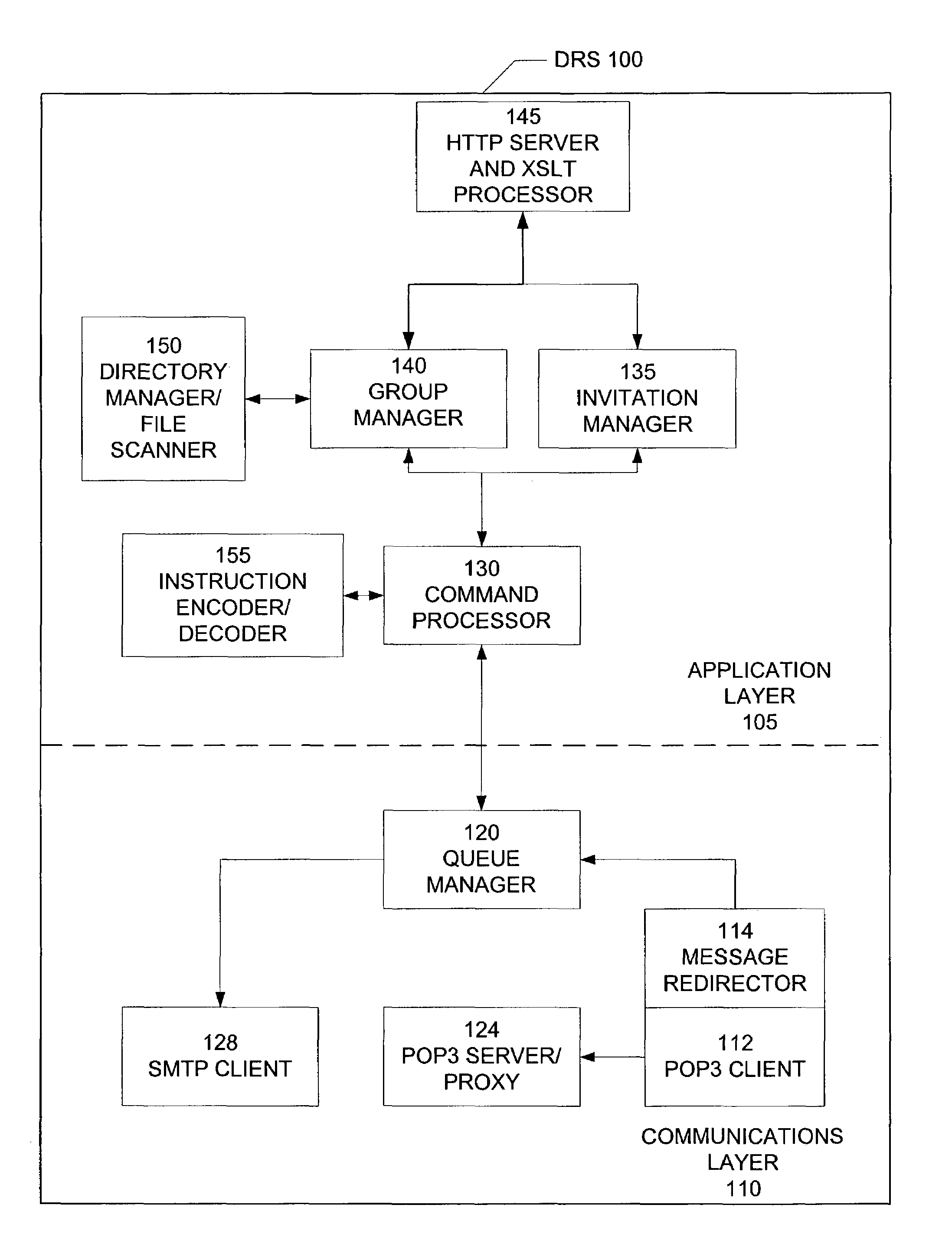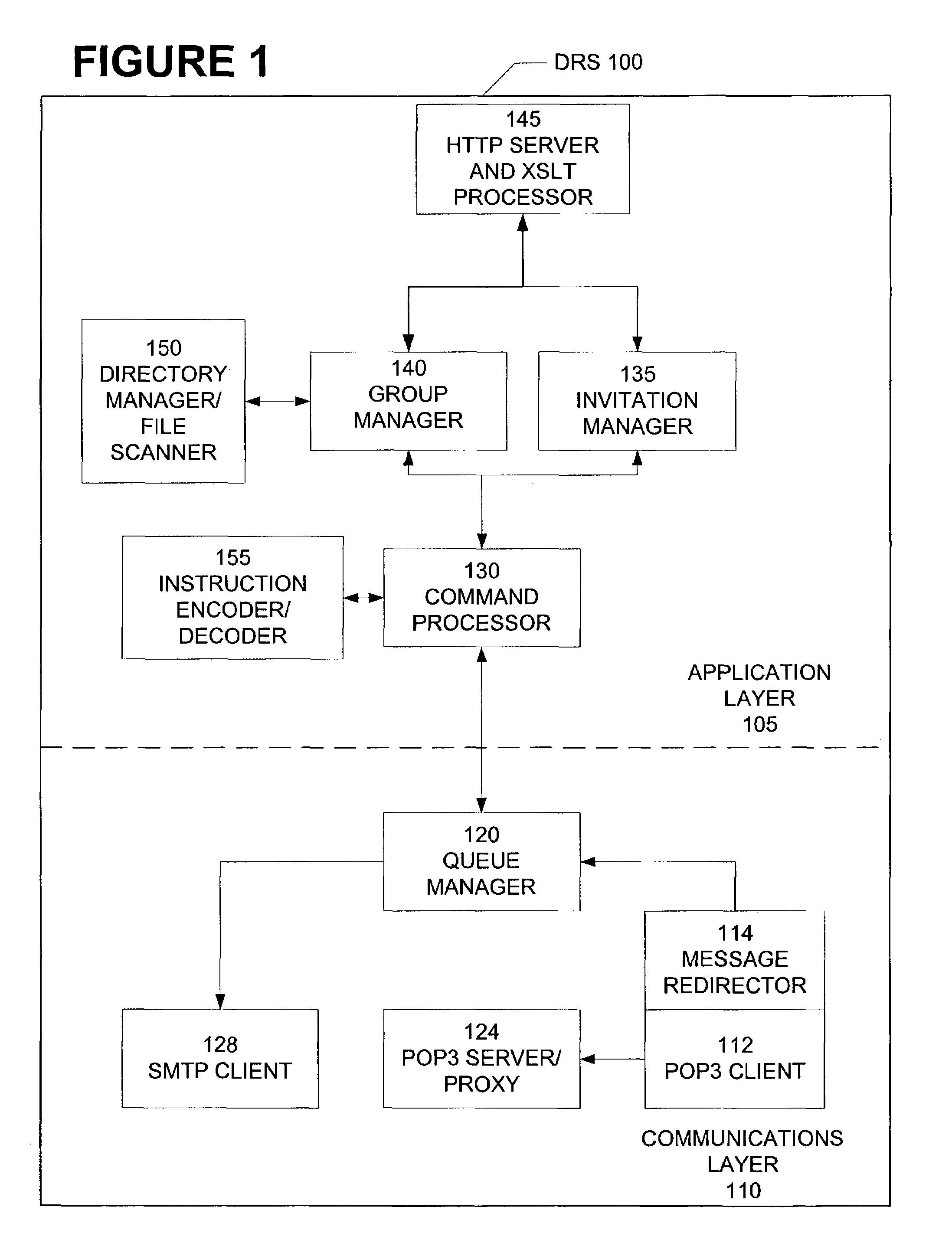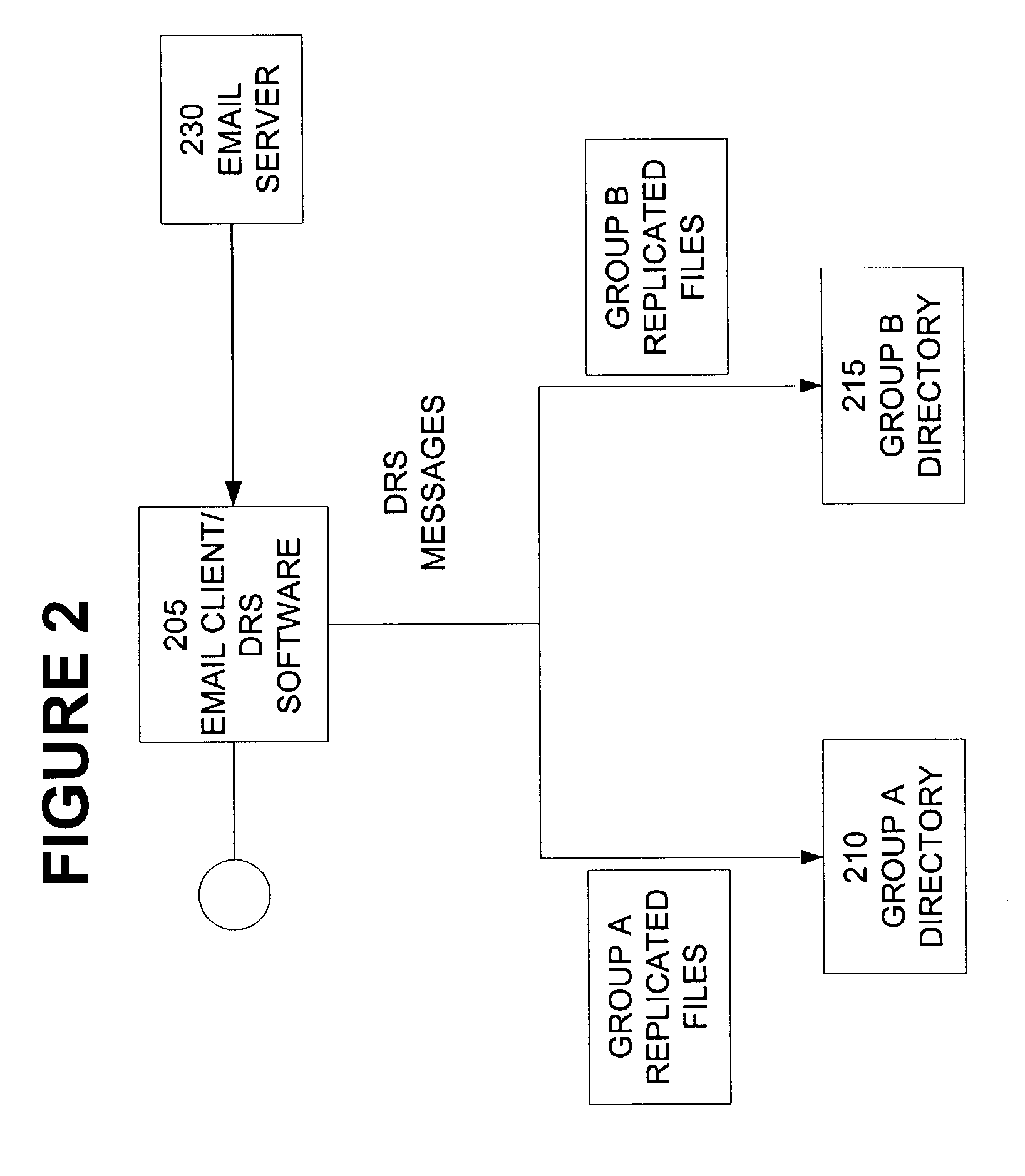Data replication system and method
- Summary
- Abstract
- Description
- Claims
- Application Information
AI Technical Summary
Benefits of technology
Problems solved by technology
Method used
Image
Examples
Embodiment Construction
[0046]An embodiment of the present invention is a data replication system (DRS). The DRS comprises two layers—an application layer and a communications layer. The communications layer implements a message redirector and collects DRS messages for the application layer. The application layer handles the DRS messages in the context of whatever application it implements. In one embodiment, a DRS message is used within an e-mail system to form groups and replicate files among group members. In this embodiment, the e-mail stream passes through a message router comprising an application layer interface. The message router extracts DRS messages while allowing e-mail messages to pass. Once extracted, the DRS message is parsed and instructions conveyed by the DRS message are implemented by a command processor. Command sets comprise instructions for both group formation and file management and update.
[0047]Referring to FIG. 1, a data replication system (DRS) 100 according to an embodiment of t...
PUM
 Login to View More
Login to View More Abstract
Description
Claims
Application Information
 Login to View More
Login to View More - R&D
- Intellectual Property
- Life Sciences
- Materials
- Tech Scout
- Unparalleled Data Quality
- Higher Quality Content
- 60% Fewer Hallucinations
Browse by: Latest US Patents, China's latest patents, Technical Efficacy Thesaurus, Application Domain, Technology Topic, Popular Technical Reports.
© 2025 PatSnap. All rights reserved.Legal|Privacy policy|Modern Slavery Act Transparency Statement|Sitemap|About US| Contact US: help@patsnap.com



